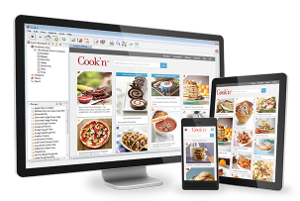
Proctor & Gamble first introduced shortening to the world in the form of Crisco®. It carried the advantage over lard, a pig fat used for frying, because when melted, it had a higher smoking point, didn't pick up the odors of the foods frying in it, and had a longer shelf life. Shortening originates from vegetable oil. Through a process called hydrogenation, hydrogen atoms are added into the chemical structure of the vegetable oil. This makes the oil become more saturated so that it stays in a solid form at room temperature. When heated, the solid mass turns to liquid, very much like vegetable oil. Shortening can be used both to fry foods and to make baked goods like pastries and cookies. The shortening used in pie crusts makes them tender and flaky as it separates the flour into thin layers with fat between them. When baked, the shortening melts, leaving wonderful flaky layers behind.
Cook's Note: Never leave shortening unattended while heating. Any shortening will burn if overheated heat it over low to medium heat and pay attention. If the shortening starts to smoke, turn off the heat and let it cool slightly. If a fire erupts, cover the pan with its lid and turn off the heat until cooled. NEVER put water on hot or burning shortening, as the very hot oil will spatter out of the pan and burn you badly.
This Shortening recipe is from the Food Facts and History Cookbook. Download this Cookbook today.